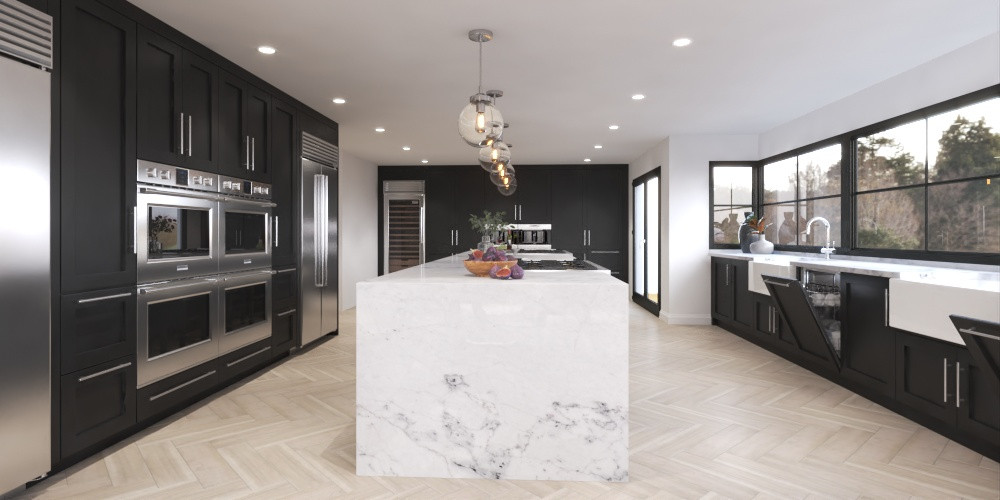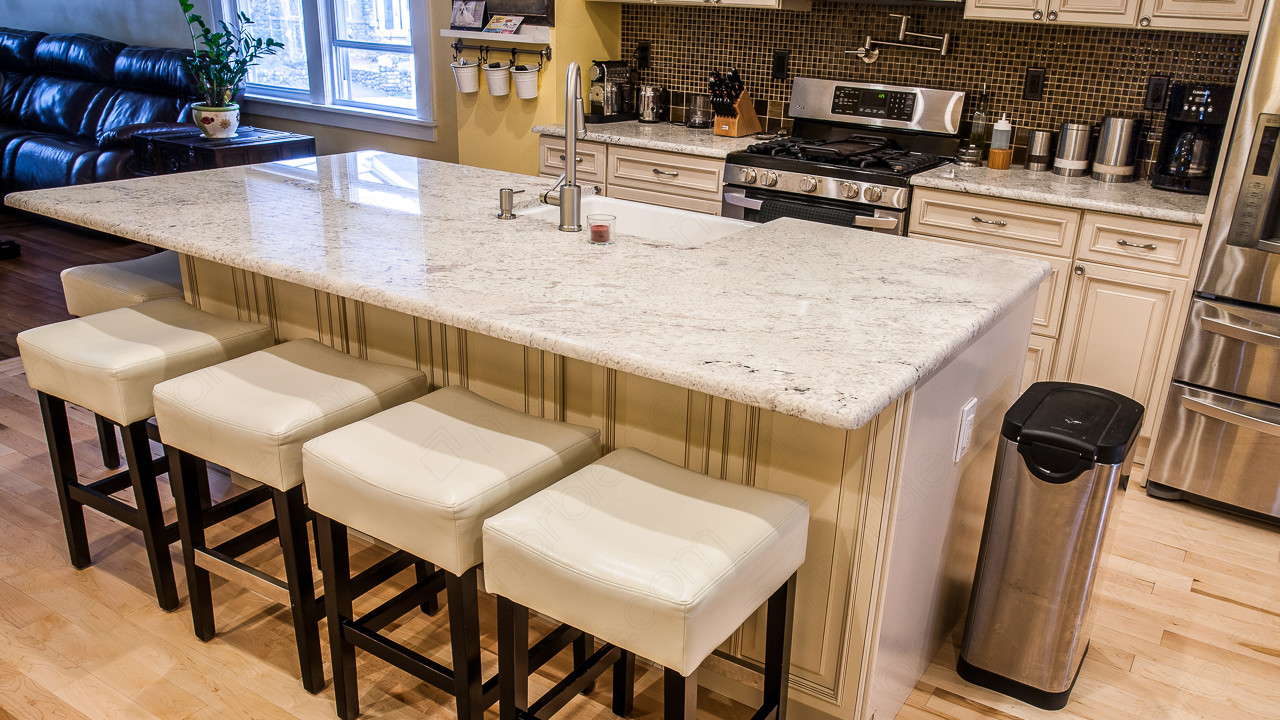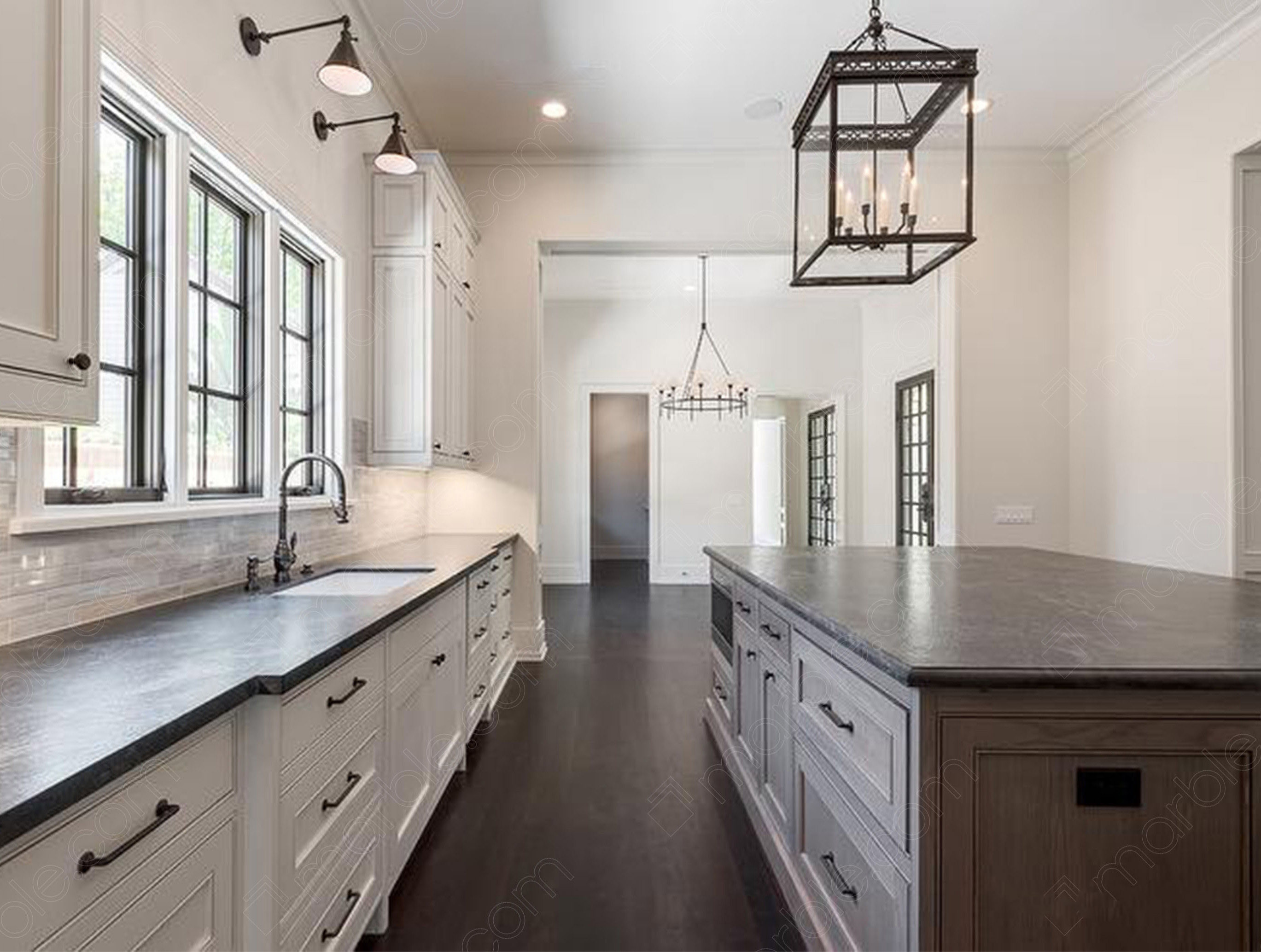Table of Contents
Designing a modern-day kosher kitchen is easier than ever with the latest kitchen appliance technology and limitless options for customization. The golden rule of keeping a kitchen kosher is making sure all meat and dairy products are completely separated. The best way of accomplishing this is to double everything: utensils, ovens, refrigerators, sinks and having extra-long countertop space. Having two of everything is the simplest way of keeping your kitchen kosher, but if your kitchen is not large enough to have two of the larger appliances, then there are work arounds.
We spoke to kitchen design professional Lisa Eisen to provide us some insight on how a kosher kitchen could look.

Utensils
Having separate meat and dairy utensils is a must have. According to Kashrut (Judaism’s dietary laws) meat and milk must never be combined in anyway. The simplest way to ensure these ingredients never interact is by having a set of utensils for each. It is optimal to have a simple organizational system to differentiate which utensils will be used for their specific item. Color coding is a clean and effective way to quickly recognize which utensil matches their intended food. Many Jewish families adopted the color-coding system of red utensils for meat, blue utensils for dairy, and yellow or green utensils for ‘pareve’ (foods that are neutral like fruits, vegetables and certain types of fish).
When purchasing color-coded utensils, make sure to buy matching tableware like plates, napkins, containers, and tablecloths. Meat and dairy are not allowed to be served at the same time either, so you will need 2 sets of everything when changing from a meat dish to a dairy dish.

Lisa Eisen - This looks cute and it is very organized. Some people can see this as okay but in most situations, it would be easier to have all dairy and meat utensils on different ends of the kitchen.
Cabinet Space
Having plenty of cabinet space will be needed to store all the extra tableware and appliances. If your kitchen is large enough to have multiple cabinets on each side of the kitchen, that would be ideal so there is little chance of cross contamination with meat and dairy. For smaller kitchens, make sure all canned goods are properly labeled and easily recognizable. Installing cabinets with adjustable shelves would be a wise investment so you have options with organization and customization. Kosher kitchens can dedicate individual drawers for 1 type of utensil or use a single shelf for 1 type of appliance.
Lisa Eisen - Bigger is better. People always want to get more space when upgrading. Some people want plenty of space between everything but others may not have the room or prefer the convenience of everything close together. It's what you are comfortable with.
Sinks
Sinks also need to follow the meat and dairy separation rule; meaning many kosher kitchens will install 2 sinks when remodeling. Stainless steel is a perfect choice compared to stone sinks or porcelain since it is easier to clean and non-porous. Having a smooth, steel surface minimizes the risk of dairy or meat remnants getting caught in-between the miniscule pores and veins of something like porcelain.
For smaller kitchens without the space to install 2 full sinks, you may also consider installing a prep sink. Some sects of Judaism may allow you to use the same sink, but meat and dairy utensils and plates cannot be washed at the same time. The sink must be thoroughly cleaned and let sit for 24-hours before being used again. Double sinks can be considered an option if there is a large barrier in the middle to make sure water does not splash between spaces.
Separate drying racks matching the implemented organizational system will allow complete separation of your meat and dairy dishware.

Lisa Eisen - The most common things people ask me is if they can put in another sink. Everyone wants a second sink and they like the really deep ones that have 30-36 inch basins.
Countertops
Regarding kosher countertops, it’s better to have plenty of space. Meat and dairy dishes cannot be served at the same time or in the same location as the steam can mix. Countertops need to have non-porous surfaces which allows them to be more efficiently cleaned during koshering. The best surfaces for kosher countertops are granite and quartz stone as they are non-porous, have plenty of color options and can withstand the koshering process of having boiling water poured on its surface.
Lisa Eisen- It depends on what your personal preference, your community, and what your Rabbi says. Granite is great but porous. Marble is beautiful but takes some work to clean. Quartz is non-porous but artificial so some may not consider it kosher because it's not natural. Non-porous is what to aim for.
Appliances
Like utensils and tableware, having double appliances is the best practice for designing a kosher kitchen.
Two refrigerators are good, but not all kitchens can accommodate that much space to a large appliance. A single refrigerator can be used as long as meat and dairy products are kept separated and properly labelled. Placing the ingredients on separate shelves or in different drawers will limit the risk of cross contamination. In case of spillage, carefully remove the shelf and thoroughly clean it out so any miniscule traces are wiped away. Some families have installed a mini-fridge and designated it for the ingredient they use less often.
Two ovens and microwaves will keep foods divided and reduce the risk of mixing. A single microwave is ill-advised as microwave covers have holes allowing steam to rise. Steam contains traces of the food placed inside and can stick to the walls of the microwave.
Two dishwashers labelled as meat or dairy will ensure your dishes never meet at any point. With panel ready dishwashers available, you can easily install two dishwashers in your cabinets. Panel ready dishwashers require individual plumbing, so there is no chance for the residue of meals to mix when cleaning. Modern dishwashers come with a high-heat cleaning cycle which can be used in the koshering process.
When purchasing appliances, check to see if they have Sabbath mode. Sabbath mode allows electronic appliances to turn off their electrical systems and lighting for Jews to honor Shabbat and other religious days of rest. For instance, an oven in Sabbath mode will turn off its lights and 12-hour shut off switch to allow food to remain warm until it is turned off. Manufacturers are installing Sabbath mode on most appliances, but always double check before purchasing.
With all these extra appliances and large cabinet space, it can take some creativity to see how you want your kitchen to look. Some popular options are to have your kitchen be symmetrical or have everything layered with open shelves to maximize counterspace. Take a look at a few kosher kitchen layouts and see what you want your kosher kitchen to look like.
















 The article helped me immensely
The article helped me immensely
 I’m now more informed on the subject
I’m now more informed on the subject
 I have questions about Marble.com
I have questions about Marble.com
 The article was not accurate at all
The article was not accurate at all
 There is a serious lack of information
There is a serious lack of information
 I have questions about Marble.com
I have questions about Marble.com